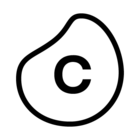Question
Filtering Graph on 2 KPI’s with Filters
Hi All,
Im trying to implement a bar graph between two of the same KPIs but with different filters on them. Ive created the bar chart with both KPIs displaying by month, and then I added two dropdown buttons that select the plant/warehouse of interest. Both of these dropdown buttons values are then set to text variables I created.
I want to now filter each KPI bar segment based on the button values. So the end result would be two bars for each month, with one bar being filtered on the first buttons value and the second bar being filtered on the second buttons value.
Below is what I have now, just without the functionality of the filters to distinguish each bar.
Any help is greatly appreciated. Thanks.
image1811666 40.4 KB
Enter your E-mail address. We'll send you an e-mail with instructions to reset your password.




